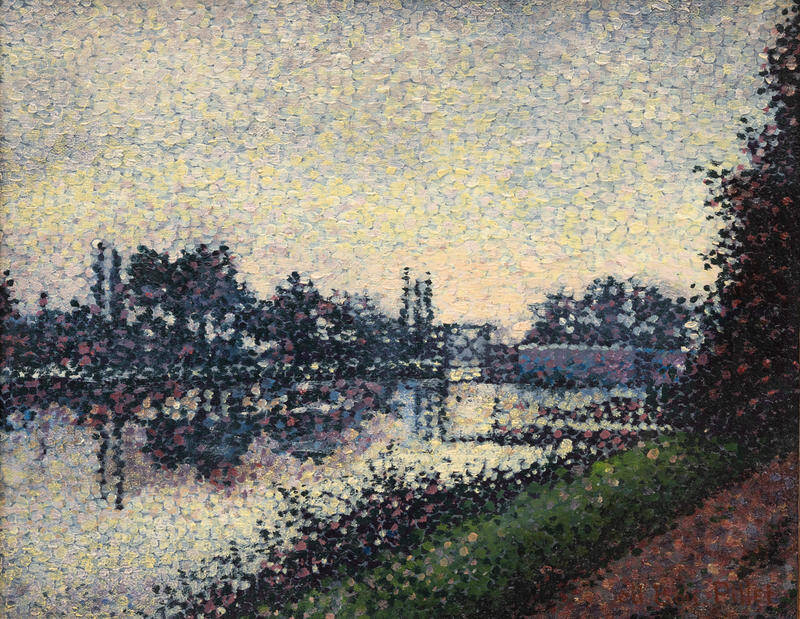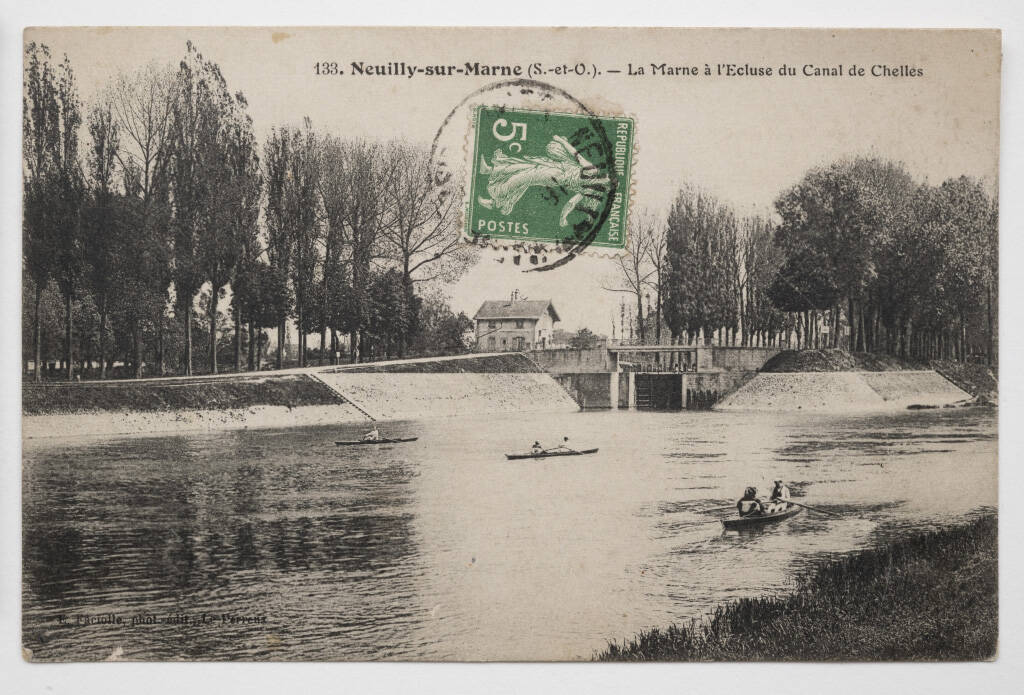Last year, the Gallery welcomed an exciting addition to its permanent collection: Paysage à l’Écluse (Landscape with a Lock), 1886–87 by leading Neo-Impressionist painter Albert Dubois-Pillet. Purchased with the support of the Lyndsay Garland Trust, it is currently on display in Light from Tate: 1700s to Now. In the below article, Sophie Matthiesson, Senior Curator, International Art and coordinating curator of Light from Tate: 1700s to Now shares her insights into the often overlooked significance of Dubois-Pillet’s visionary career, and this remarkable painting.
-----------------------
By the mid-1880s, Impressionist painting in France was losing its power to jolt and was sliding inexorably into the ranks of bourgeois art. The artists who had pioneered it were scattered and rarely saw eye to eye. Their eclipse had been forecast by a radical Paris art critic, Félix Fénéon, who warned that a scientific movement was about to supersede Impressionism.[1] Arising out of Impressionism, the new movement, sometimes known as ‘Pointillism’, aimed to control the optical properties of colour and light by placing tiny touches of paint side by side, to produce an effect of vibrating luminosity. The movement’s leader was the young painter Georges Seurat, who was working to apply the colour and optical theories of modern scientists such as Michel Eugène Chevreul, Charles Blanc, David Sutter, Hermann von Helmholtz and Ogden Rood.
While Seurat preferred the term ‘chromoluminarism’, the new style was dubbed ‘Neo-Impressionism’ by Fénéon, on the grounds that it aspired not to capture the fleeting moments of light in a landscape – as Monet was famously doing – but to immortalise the sensations of light through the careful manipulation of colour.[2]
To describe the artists who adopted Neo-Impressionist methods as Seurat’s ‘followers’, is somewhat misleading. Seurat’s ‘scientific’ approach appealed to some of the most intellectual and independent artists of the Paris art scene, such as Paul Signac, Camille Pissarro and Albert Dubois-Pillet. While the early involvement of Signac and Pissarro is well known, the contribution of Albert Dubois-Pillet, is much less so. The Gallery has just acquired a truly scintillating example of early Neo-Impressionist painting by this little-known but pivotal member of the 1880s Paris avant-garde, who died in 1890, four years after the movement was launched. So who was he?
Dubois-Pillet was not simply an early and prolific member of the select group around Seurat: it was he more than anyone who created the conditions in which Neo-Impressionism could flourish. An outwardly conservative figure, Dubois-Pillet was raised in an upper-middle class family in Toulouse and became a career soldier, fighting in the Franco-Prussian war (1870–71) and suppressing his own countrymen in the notorious Paris Commune of 1872. A self-taught painter, Dubois-Pillet later arranged to be stationed in Paris where he soon joined fellow artists in their struggle to find exhibiting venues and advocates. Surprisingly, perhaps, in light of his own military background, Dubois-Pillet appears to have been drawn to the most radical segment of this artistic fringe – ex-Communards and sympathisers of anarchism, the utopian philosophy of Russian exile, Pierre Kropotkin. They in their turn appear to have welcomed this unlikely newcomer into their midst.
In 1884 Dubois-Pillet, widely recognisable by his monocle and cravat, became the driving force behind the formation of the now-legendary Société des Artistes Indépendants. Its objective was to stage regular open exhibitions, in contrast to the official Salon, and to challenge its stranglehold on public taste and artists’ prospects. Virtually single-handedly, and within the space of a few days, Dubois-Pillet devised the radical framework of the new society, which eliminated juries and prizes and distributed money from sales equally among the participating artists.[3]
It was at an 1884 exhibition of the Indépendants that Seurat and Signac first met, and where Seurat first showed his Bathers at Asnières, 1884 (National Gallery London), a strangely frozen scene of working-class Parisians at play made up of simplified forms and blocks of colour. Secretive to a fault, Seurat over the following months allowed a miserably small number of fellow artists, including Dubois-Pillet, to witness his next painting in progress, Sunday Afternoon on the Island of La Grande Jatte, 1884–86 (Art Institute of Chicago). The canvas, which featured more robotic pleasure-seekers by the Seine, was created through thousands of flecks of colour vibrating at an almost molecular level against one another with hallucinogenic effect. Entranced, Dubois-Pillet, Paul Signac and Camille Pissarro attempted Seurat’s new ‘pixilating’ method for themselves. By the following year, Dubois-Pillet’s works were wholly Neo-Impressionist.

